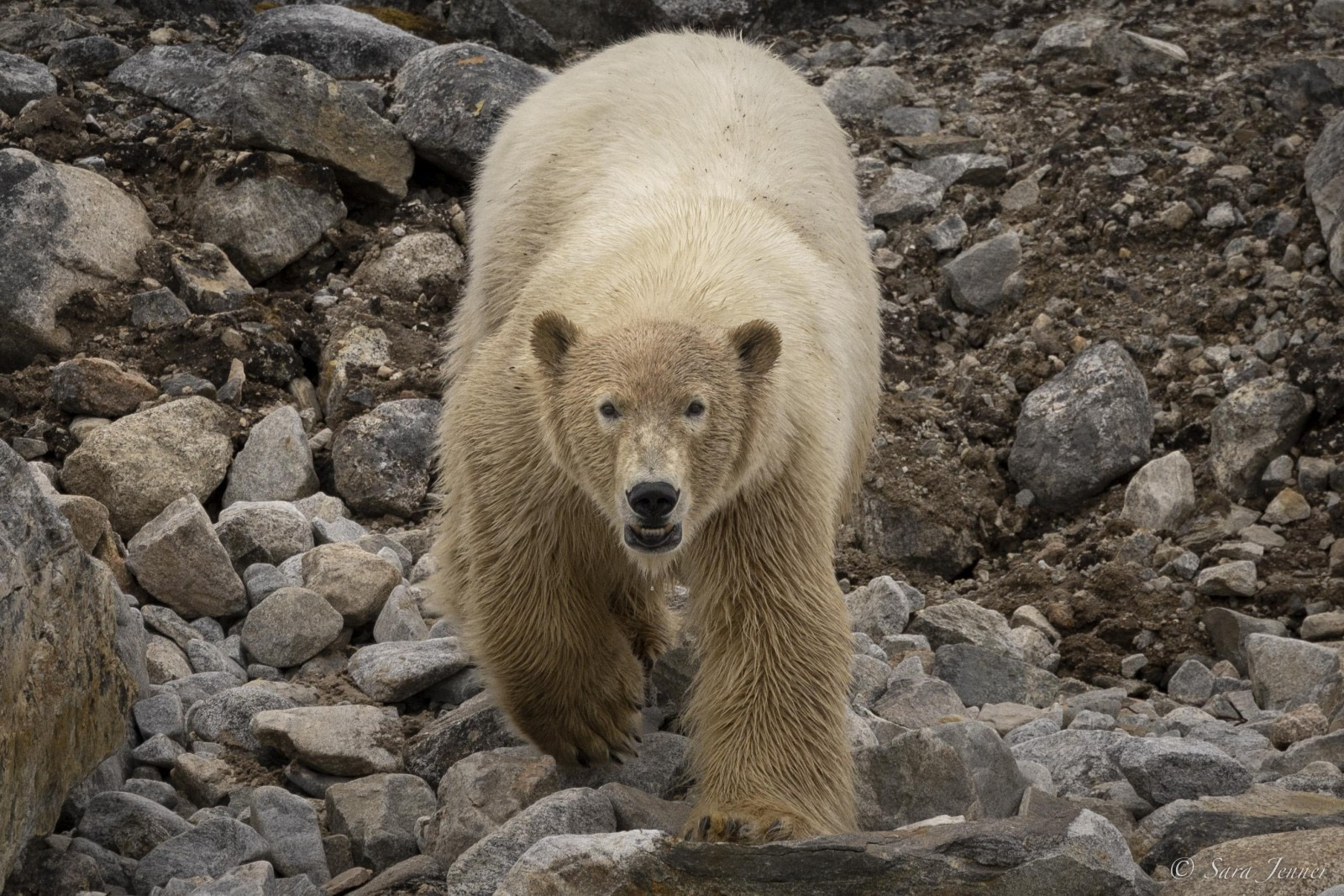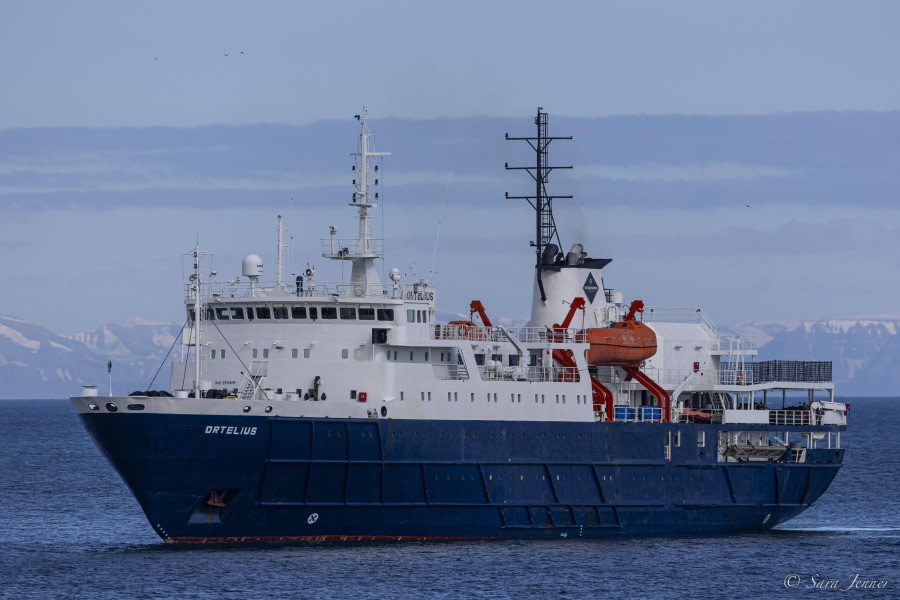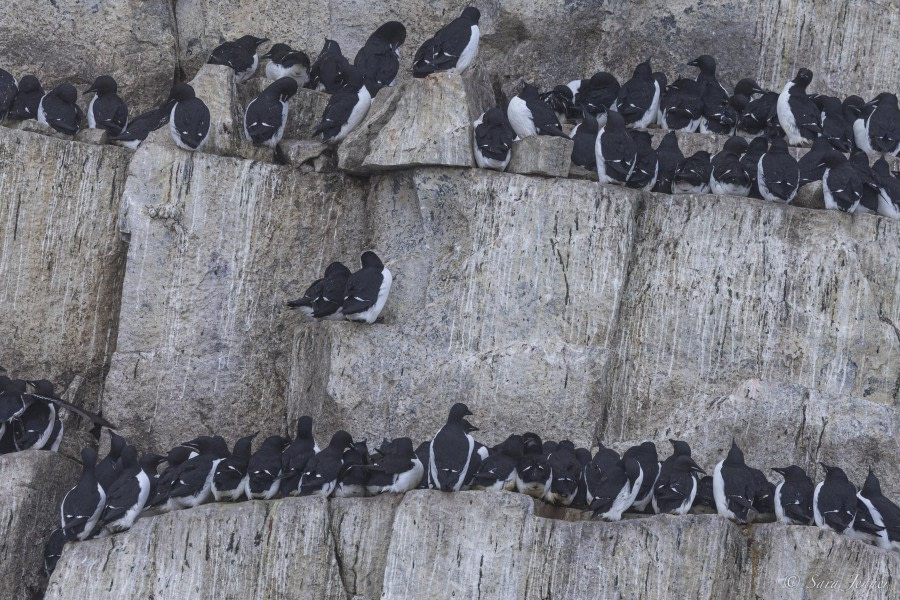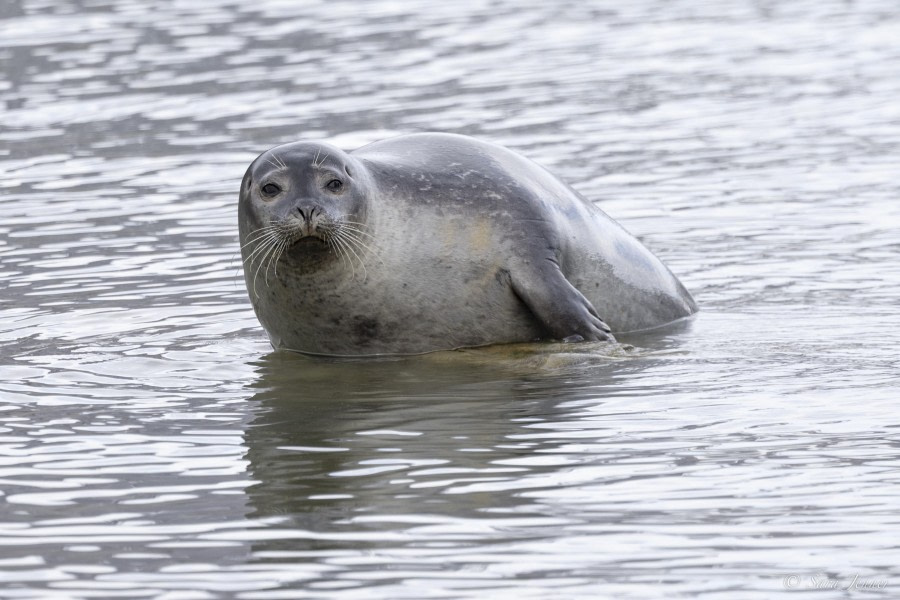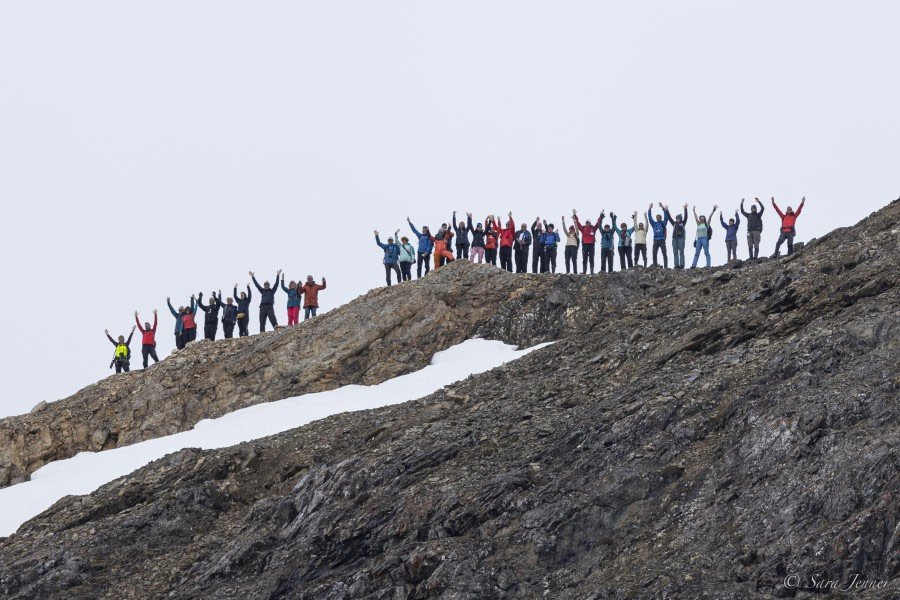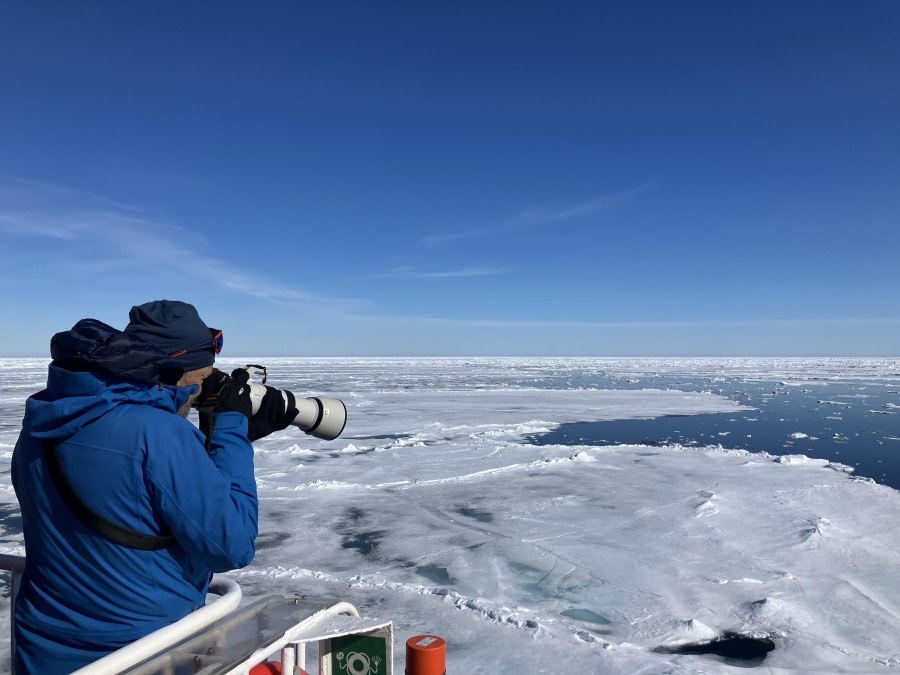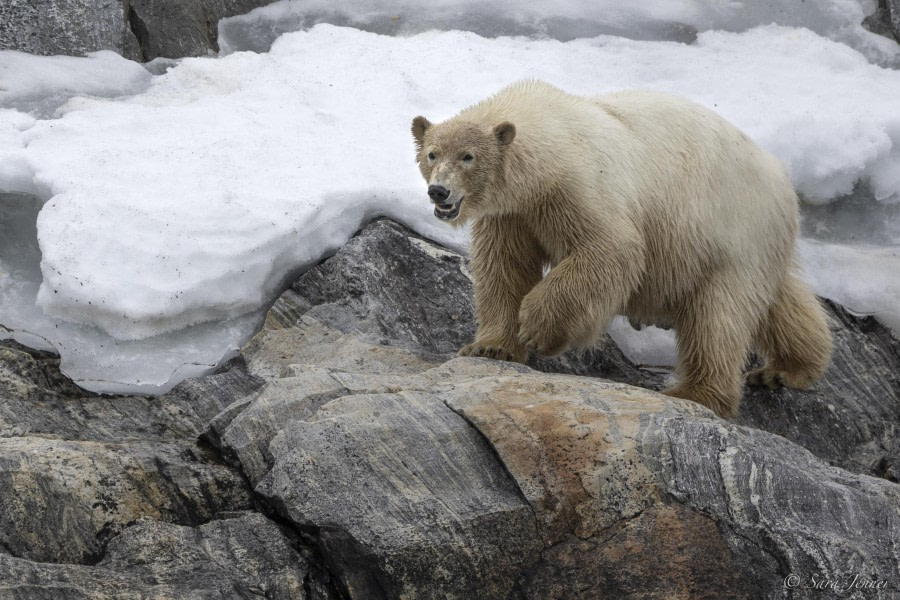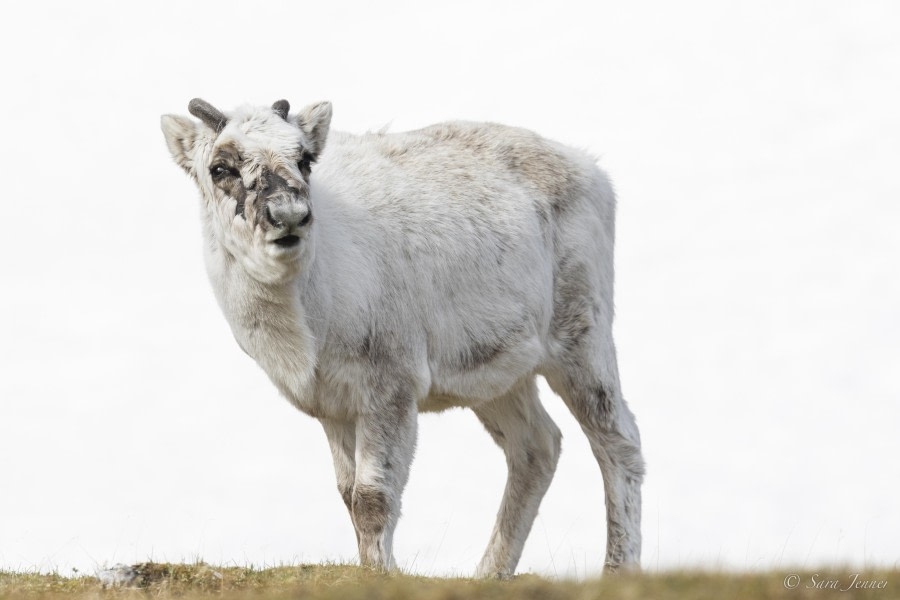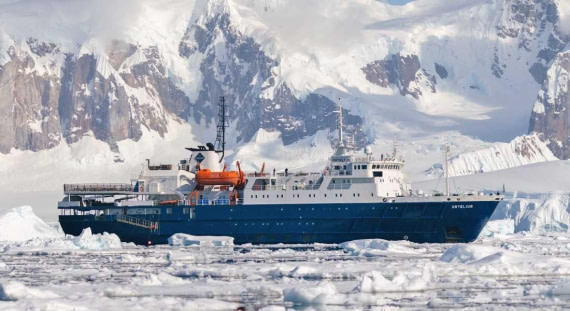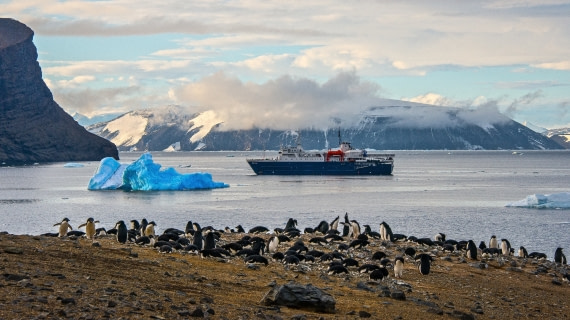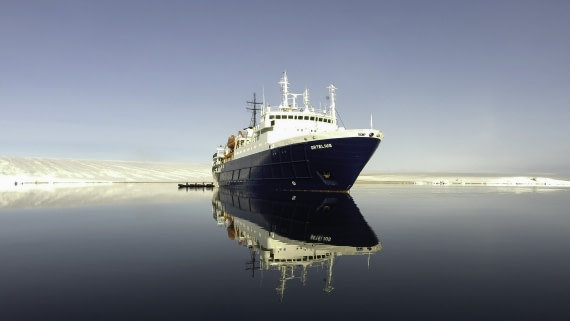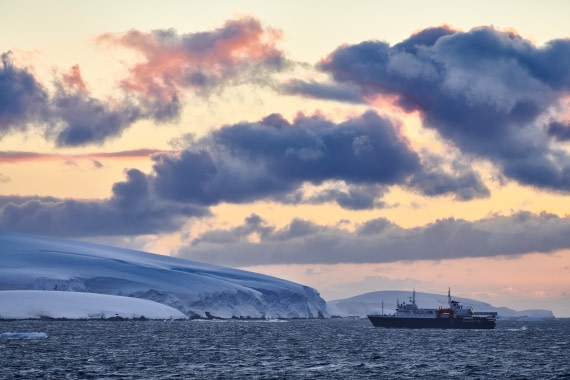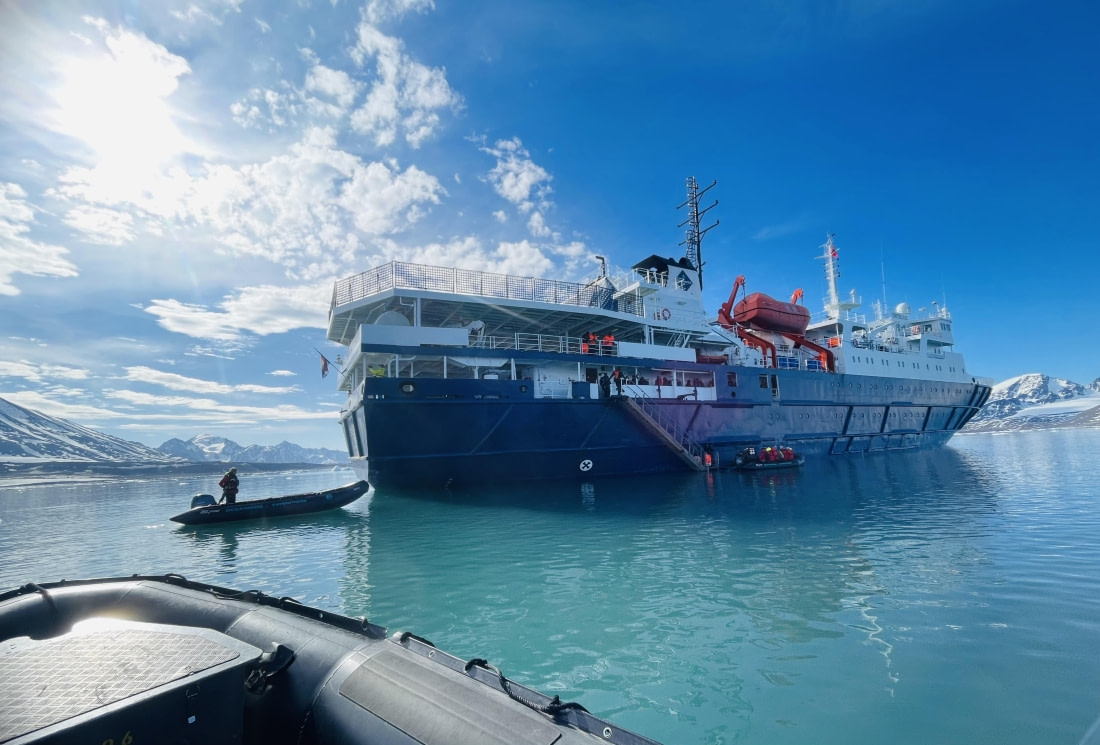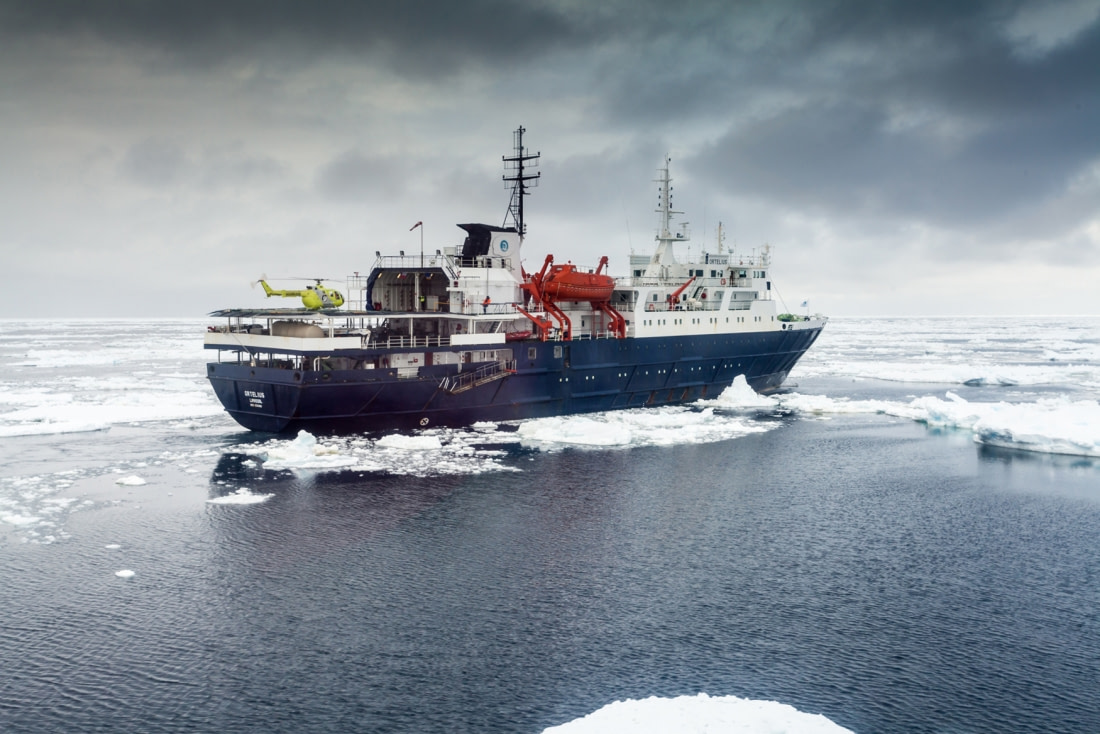| Datum: |
23.06.2024 |
| Position: |
79°43.9’ N - 011°01.7’ E |
| Wind: |
SSW 4 |
| Wetter: |
Overcast |
| Lufttemperatur: |
+6,2 |
After a hearty breakfast, we boarded the zodiacs and headed for the sandy beach of Smeerenburg. On the way in, we rounded a point where a group of walrus were huddled together on the beach causing a ripple of excitement among the guests. After the first five zodiacs of guests had landed ashore they were led along the beach by guides Hazel, Misha and Allan to a viewing point where they could admire the walrus: true Arctic icons! The bewhiskered beasts were very relaxed and sleepy so for the best part of an hour we watched them. For the most part, it’s fair to say that the Walrus were not that active, but every now and again some sort of movement within their tight huddle would elicit quiet laughs from their audience as they jabbed at each other with their tusks or exhaled, snorting loudly.
Meanwhile, the last five zodiacs to land were led by guides Christophe, Barbara and Aitana on an exploratory walk of the area which is of huge cultural and historical importance. Smeerenburg was the site of a Dutch whaling station way back in the first half of the 17th century. At its peak some 200 men worked there, processing whales that had been caught in the fjords of Svalbard. In a nutshell, it was a place that saw the death and destruction of bowhead whales on a horrendous scale. We imagined the beach littered with partially dismembered carcasses, the unbearable stench, and the clouds of birds that flew in to feed off the detritus. Little remains of the whaling station, but we could see some of the circular formations of ‘blubber cement’ that outlined where the huge try works sat that were used to extract oil from the blubber. A simple brass plaque mounted on a frame of Siberian driftwood marked the site, which is remembered as being Europe’s first oil venture.
Halfway through the morning, the two groups switched places. Part of our time ashore was dedicated to a beach clean, a tradition that Oceanwide Expeditions tries to observe on at least one landing of every Svalbard voyage. A fantastic amount of plastic rubbish was collected as everyone got enthusiastically involved.
The staff radios crackled as a report came in from the Ortelius bridge watch that a Polar Bear had been spotted by officer cadet Erik! Assistant Expedition Leader Claudio was sent in a zodiac to investigate. It was across the water from us, in a bay called Virgohamna on Danskøya (Danes Island). Expedition Leader Sara instantly made the decision to close our landing and get all guest off land as soon as possible, not because we were in any risk of the bear but because it presented a fantastic opportunity to see this magnificent animal. She requested that all remaining zodiacs be launched from the ship and all guests be emabarked into them without delay. Some of us were already back onboard and out of our outdoor gear but the exciting announcement that we were going to go and have a look at the bear had us scrambling to get back into our waterproofs! The zodiacs gathered just off Virgohamna and made a slow approach towards where the bear was enjoying a relaxed stroll along the waterline. Our guides quickly identified it as a young male, perhaps only three or four years old. The best news of all was that he was in fantastic condition with healthy deposits of fat in all the right places for a polar bear! The zodiacs lined up just offshore and the bear gently wandered past us, stopping from time to time to check us out and sniff the air. At one point he stopped to paw a man-made relic that lay among the rocks. It was a truly phenomenal encounter with the creature we had all journeyed to the high Arctic hoping to see. The experience moved some people to tears and left pretty much everyone speechless. Among the thousands of photos taken of this beautiful creature were some truly spectacular framefilling images.
Lunch had opened while we were admiring the bear from the zodiacs, but the restaurant was empty for a time as we delayed our eating for time with the beautiful bear. Eventually we had to leave though, so after moving quietly away from the bear, once at a distance from him we sped back to the ship, stripped off our outdoor gear, and headed for a well-earned meal. The anchor was raised, and Ortelius got under way for Magdalenafjord, further south down the coast. We arrived mid-afternoon, and soon all the zodiacs were on the water to take us out for an exploratory cruise of this spectacular place. The scenery was breathtaking; towering mountains, tumbling glaciers and steep scree-covered slopes where countless Little Auks made their home. Harbour seals popped up their heads here and there and a variety of birds were seen including common eiders, Arctic terns, black guillemots, barnacle geese, pink-footed geese and snow buntings. The birders were especially excited to see good numbers of king eiders. Several reindeer were also spotted, bounding across the steep mountain sides. We went into the fjord as far as we could go, where the Waggonway Glacier meets the sea. This curious name appears to be the result of a feint medial moraine that leaves two perfectly parallel lines down the middle of the glacier, which resemble the tracks of an old wagon.
We returned to the ship, passing Gravneset, a point that is the location of some 130 or more centuries-old graves of whalers and mariners, which is now a protected site of special cultural and historical significance. A Sysselmannen’s (Svalbard Governor) hut could be seen nearby. Back on board, we got ready for the briefing that would prepare us for the next day’s activities, before heading off to dinner. And so ended a truly remarkable day when the Lord of the Arctic, the polar bear, graced us with his presence and touched our hearts.
